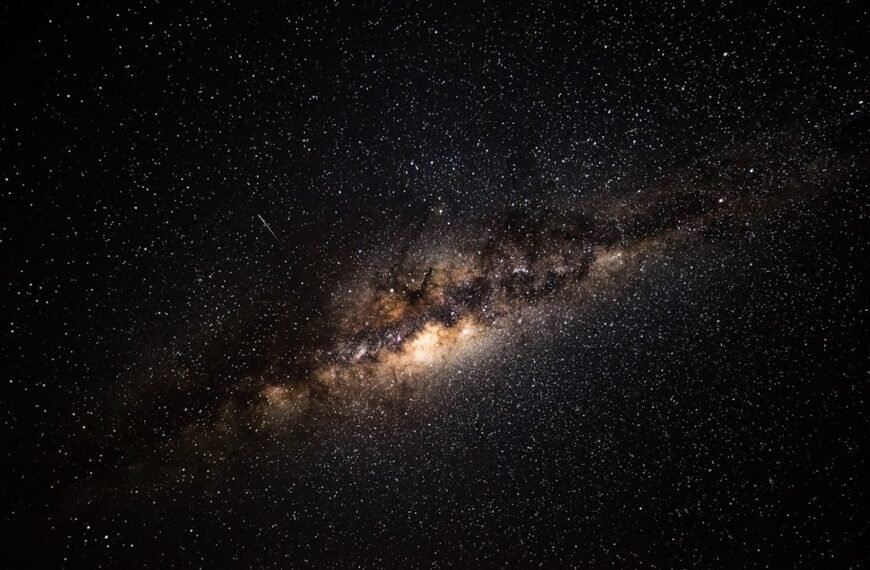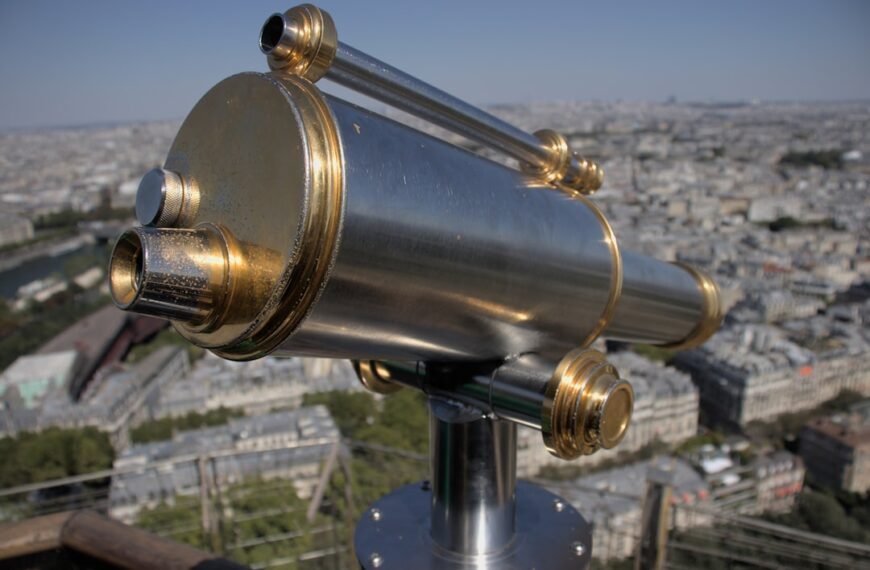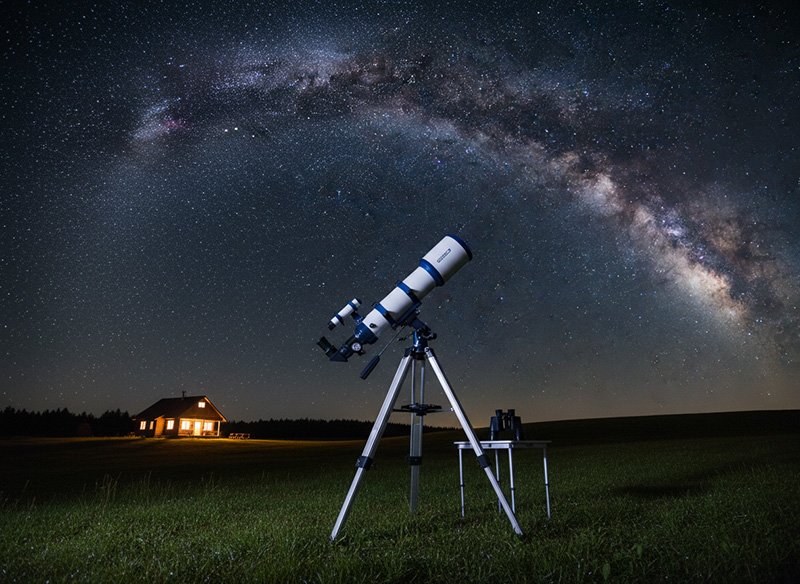Key Takeaways
- Yes, you can see galaxies with a home telescope, and some are even visible with binoculars or the naked eye under dark skies.
- The Andromeda Galaxy (M31) is the easiest and most popular galaxy for amateur astronomers to observe.
- Equipment like a reflector or catadioptric telescope with at least an 8-inch aperture will enhance your galaxy-viewing experience.
- Light pollution and weather conditions play a major role in observing galaxies, so finding a dark sky location is crucial.
- Spring and summer are often referred to as “Galaxy Season”, making them the best times to view deep-sky objects.
Introduction
Stargazing is a fascinating hobby that connects us with the vastness of the universe. One of the most thrilling experiences for amateur astronomers is observing galaxies—massive collections of stars, gas, dust, and dark matter billions of light-years away. But can you actually see galaxies with a home telescope? The short answer is yes, and this article will guide you through everything you need to know to see and enjoy these breathtaking celestial objects from your backyard.
What Are Galaxies?

Before we dive into how you can observe galaxies with a home telescope, let’s quickly define what galaxies are. A galaxy is a vast system that contains millions or even trillions of stars bound together by gravity. Our own Milky Way galaxy is home to our solar system and spans over 100,000 light-years in diameter.There are different types of galaxies, such as:
- Spiral galaxies, like the Milky Way and Andromeda.
- Elliptical galaxies, which are shaped like elongated spheres.
- Irregular galaxies, which lack a defined shape.
Some galaxies, like the Andromeda Galaxy, are relatively close to Earth (by cosmic standards), while others are billions of light-years away. Fortunately, many of these distant wonders are within reach for amateur astronomers using home telescopes.
Can You See Galaxies with a Home Telescope?
The answer is a resounding yes! With the right equipment, patience, and a good location, you can observe many galaxies from your backyard. While professional observatories capture detailed images, even amateur astronomers can enjoy the beauty of distant galaxies. Here’s how you can make it happen.
Best Galaxies to Observe with a Home Telescope

Some galaxies are easier to see than others, depending on their brightness, size, and distance from Earth. Below are some of the most popular and beginner-friendly galaxies to observe.
1. Andromeda Galaxy (M31)
- Distance: 2.5 million light-years away
- Visibility: Naked eye under dark skies; binoculars and telescopes enhance detail
- Why It’s Special: The Andromeda Galaxy is the closest major galaxy to our Milky Way and one of the brightest deep-sky objects visible from Earth. It spans a massive area in the night sky, appearing six times larger than the full moon. With a telescope, you can see its bright core and dark dust lanes.
2. Triangulum Galaxy (M33)
- Distance: 2.75 million light-years away
- Visibility: Visible with binoculars or small telescopes under dark skies
- Why It’s Special: The Triangulum Galaxy is part of the Local Group of galaxies. Though dimmer than Andromeda, it’s a rewarding target for those in areas with low light pollution.
3. Whirlpool Galaxy (M51)
- Distance: 23 million light-years away
- Visibility: Best viewed with a larger telescope (8-inch aperture or more)
- Why It’s Special: This spiral galaxy is famous for its well-defined structure and interaction with a smaller companion galaxy. It’s a favorite among astrophotographers.
4. Sombrero Galaxy (M104)
- Distance: 29 million light-years away
- Visibility: Easily visible with most telescopes
- Why It’s Special: The Sombrero Galaxy gets its name from its distinctive sombrero-like shape, created by a bright central bulge and a thick dust lane.
5. Bode’s Galaxy (M81) and Cigar Galaxy (M82)
- Distance: 12 million light-years away
- Visibility: Both galaxies are visible in the same field of view with a small telescope
- Why They’re Special: These two galaxies are close neighbors and provide stunning views when observed together. M82, also known as the Cigar Galaxy, is a starburst galaxy with intense star formation activity.
What Equipment Do You Need?
Observing galaxies requires the right gear, but you don’t need to break the bank. Here’s what to consider when choosing equipment.
Telescope Types
- Reflector Telescopes
- Affordable and ideal for deep-sky objects like galaxies.
- Offer large apertures, allowing more light to reach your eyes.
- Require occasional maintenance, such as mirror alignment.
- Catadioptric Telescopes
- Compact and versatile, combining lenses and mirrors.
- Excellent for both planetary and deep-sky viewing.
- More expensive but user-friendly.
- Refractor Telescopes
- Less ideal for galaxies due to smaller apertures.
- Better suited for planetary and lunar observation.
Minimum Requirements
- Aperture: An 8-inch aperture telescope is recommended for observing galaxies. Larger apertures gather more light, making faint objects like galaxies easier to see.
- Eyepieces: Use quality eyepieces to enhance clarity and magnification.
- Mount: A stable mount (preferably equatorial) is essential for tracking objects as the Earth rotates.
How to Maximize Your Galaxy-Viewing Experience

Even with the best telescope, observing galaxies can be challenging without the right conditions. Follow these tips to improve your chances of success.
1. Find a Dark Sky Location
- Light pollution from cities can wash out faint galaxies. Use dark-sky maps to locate areas with minimal artificial light.
- Popular tools like the Dark Sky Finder can help you find stargazing spots nearby.
2. Observe During Optimal Seasons
- Spring and early summer are referred to as “Galaxy Season” because the night sky during these months offers a clear view of many galaxies in the Virgo Cluster and beyond.
- Clear, moonless nights are ideal for galaxy hunting.
3. Use Astronomy Apps
- Apps like SkySafari, Stellarium, or Star Walk can help you locate galaxies and plan your stargazing sessions.
4. Practice Patience and Technique
- Start with low magnification to locate the galaxy, then gradually increase magnification for more detail.
- Allow your eyes to adapt to the darkness for at least 20 minutes.
Real-Life Examples of Amateur Discoveries
Amateur astronomers have made significant contributions to galaxy observation:
- Giuseppe Donatiello discovered a dwarf galaxy using a 12.7 cm telescope, proving that even modest equipment can yield remarkable results.
- Amateur astronomers often contribute to professional projects like HETDEX, which has identified over 240,000 galaxies.
Final Thoughts
So, can you see galaxies with a home telescope? Absolutely! With the right equipment, dark skies, and a little patience, you can observe some of the most awe-inspiring objects in the universe. Start with beginner-friendly galaxies like the Andromeda Galaxy, invest in a quality telescope, and explore the cosmos from your own backyard. Happy stargazing!
By following these tips, both beginners and experienced stargazers can enjoy the thrill of galaxy observation. Remember, the universe is vast and beautiful—why not take a closer look?
























